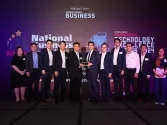Southeast Asian power companies are seizing renewable opportunities
By Sara Jane AhmedThe rapid drop in the cost of renewable energy is reshaping the world’s energy systems. Part and parcel of this shift, a new landscape is emerging among finance and power companies. Southeast Asian conglomerates such as Ayala are at the forefront.
Global capital markets are exiting coal plants used to generate electricity in terms of financing, insuring or investing. So far, over 100 banks and insurers/reinsurers, with assets under management or loans outstanding in excess of $10b, now have formal coal exit policies. Included in the exit are 40% of the top 40 global banks and 20 globally significant insurers. Momentum-wise, every two weeks, a bank, insurer or lender announces new restrictions on coal.
Some of the consequences of this exit have been felt in the Philippines. In 2016, Norway’s Norges Bank Investment Management (NBIM) divested from generator and distributor, Aboitiz Power, and included it an exclusion list as a result of an investment criteria to reduce exposure to coal assets.
Other major players responded to the seismic trends, aiming to benefit from the opportunities of renewables and the tailwinds in available capital. In 2018, Philippine companies, such as the Ayala Corporation subsidiary AC Energy, set to sell $1b worth of coal assets. According to AC Energy, the sale aimed to balance its renewable and thermal portfolios and raise capital to support regional expansion targeting 5 GW of geothermal, solar and wind projects in Vietnam, Indonesia, and the Philippines by 2025.
AC Energy’s renewable portfolio is impressive. The company has now invested in an 81MW North Luzon wind farm in Pagudpud and a 52MW Northwind Power wind farm in Bangui Bay, as well as a MonteSol (18MW), IslaSol (48MW) and SacaSol (19.8MW) solar projects. AC Renewables has also invested in Southeast Asia’s largest solar installation, Vietnam's 330MW solar park in Nin Thuan, and solar parks in Khanh Hoa and Dak Lak with a combined capacity of 80MW, and in Indonesia's Sidrap wind farm (75MW) and geothermal in Salak and Darajat, with a combined capacity of 235 MW equivalent in steam and 402MW in electricity.
In 2019, AC Energy, entered into a deal on the transfer of its entire interest in a 552MW, coal-fired plant in Lanao del Norte to its partner, Power Partners Ltd. Co. AC Energy claims that its divestment from this coal plant is to “rebalance” its generation portfolio as it aims to grow its renewable energy assets with a target of achieving at least 5GW by 2025.
Wise investors are steering clear of coal as it becomes “stranded” – a term which describes an asset, such as a coal-fired power station, which suffers from unanticipated write-downs or devaluations.
However, coal risk remains underpriced in South East Asia and despite the changes afoot, countries such as Indonesia and Vietnam continue to plan for a significant increase in thermal coal power. The International Energy Agency (IEA), which came out with a Southeast Asia Outlook, models 4GW per annum of coal installation in 2018, but final investment decisions dropped from 8GW in 2014 to below 2GW in 2018, and well below that in 2019.
This said, the coal pipelines are decreasing as renewables become cheaper and investor appetite in capital markets for renewable energy projects swells. In early 2019, AC Energy issued the first-ever US dollar climate bond in South East Asia valued at $410m on the Singapore Stock Exchange to finance renewable energy projects in the Asia-Pacific region including the Philippines, Vietnam, and Indonesia. AC Energy initially launched an offering of $225m for a 5-year tranche and closed at $300 million due to oversubscription. It also issued a $110m 10-year tranche.
More recently, UPC Renewables, owned 50% by AC Energy, has been making strides regionally, with plans of an 800MW wind farm in New South Wales, Australia.
The shift of finance away from fossil fuels is, if anything, going to increase in speed with investors are also putting more weight on ESG as a result of stockholder and stakeholder pressure. In the case of the Philippines, the SEC released ESG reporting guidelines, which will be mandatory for publicly listed companies in 2020.
Companies such as Ayala in the Philippines are reaping the benefits of the transition, but they are not alone. Across Southeast Asia, smart energy corporates such as Banpu and B. Grimm are also building renewable power at a rate scarcely thought possible only a few years ago.
Coal closure and stranded assets understandably grab the headlines, but smart corporates in the region are quietly seizing the opportunities.









![Cross Domain [Manu + SBR + ABF + ABR + FMCG + HBR + ]](https://cmg-qa.s3.ap-southeast-1.amazonaws.com/s3fs-public/styles/exclusive_featured_article/public/2025-01/earth-3537401_1920_4.jpg.webp?itok=WaRpTJwE)
![Cross Domain [SBR + ABR]](https://cmg-qa.s3.ap-southeast-1.amazonaws.com/s3fs-public/styles/exclusive_featured_article/public/2025-01/pexels-jahoo-867092-2_1.jpg.webp?itok=o7MUL1oO)









 Advertise
Advertise


